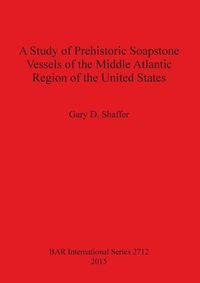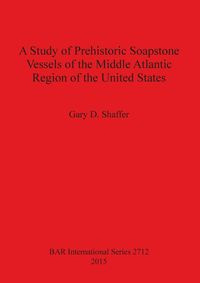A Study of Prehistoric Soapstone Vessels of the Middle Atlantic Region of the United States - Shaffer Gary D.
This study began with an intensive search to identify all prehistoric sites with soapstone artifacts in Maryland and the District of Columbia. A review of published and unpublished records and interviews with avocational archaeologists found that the number of (precisely and imprecisely mapped) is at least 340. Avocational archaeologists had collected most of the reported soapstone artifacts, and surface collecting was the most common form of artifact retrieval. These situations result in limited site contextual information and restricted opportunity to interpret site activities. The findings of this study include that soapstone use increased during the Late Archaic and remained high, at least for certain artifacts, through the Woodland periods. The few 14C dates associated with soapstone vessels in the study area and neighboring states point to the initial use of bowls around 3600-2900 BP. Consideration of the distribution of the soapstone sites and review of the anthropological literature on trade and exchange point to three major means by which Native Americans in the study area obtained soapstone artifacts: direct unfettered procurement; direct access with use of an intermediate site as staging area; and exchange with a social group which quarried and made the items. Future developments in provenance studies of soapstone may assist archaeologists in matching artifacts with their quarries. My own experiments on the manufacturing of a preform bowl demonstrate the relative effectiveness of stone and bone chisels, as well as how archaeologists might best detect soapstone debitage at sites during field testing. I suggest that two factors led to the inhabitants of the Middle Atlantic switching to ceramics: first that there was a search for more easily obtainable materials to make watertight, fire-resistant vessels; and second that the increased use of ceramics led to an increase in their mechanical properties, making them a more desirable product.
EAN: 9781407313634




This study began with an intensive search to identify all prehistoric sites with soapstone artifacts in Maryland and the District of Columbia. A review of published and unpublished records and interviews with avocational archaeologists found that the number of (precisely and imprecisely mapped) is at least 340. Avocational archaeologists had collected most of the reported soapstone artifacts, and surface collecting was the most common form of artifact retrieval. These situations result in limited site contextual information and restricted opportunity to interpret site activities. The findings of this study include that soapstone use increased during the Late Archaic and remained high, at least for certain artifacts, through the Woodland periods. The few 14C dates associated with soapstone vessels in the study area and neighboring states point to the initial use of bowls around 3600-2900 BP. Consideration of the distribution of the soapstone sites and review of the anthropological literature on trade and exchange point to three major means by which Native Americans in the study area obtained soapstone artifacts: direct unfettered procurement; direct access with use of an intermediate site as staging area; and exchange with a social group which quarried and made the items. Future developments in provenance studies of soapstone may assist archaeologists in matching artifacts with their quarries. My own experiments on the manufacturing of a preform bowl demonstrate the relative effectiveness of stone and bone chisels, as well as how archaeologists might best detect soapstone debitage at sites during field testing. I suggest that two factors led to the inhabitants of the Middle Atlantic switching to ceramics: first that there was a search for more easily obtainable materials to make watertight, fire-resistant vessels; and second that the increased use of ceramics led to an increase in their mechanical properties, making them a more desirable product.
EAN: 9781407313634

